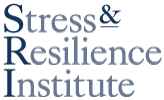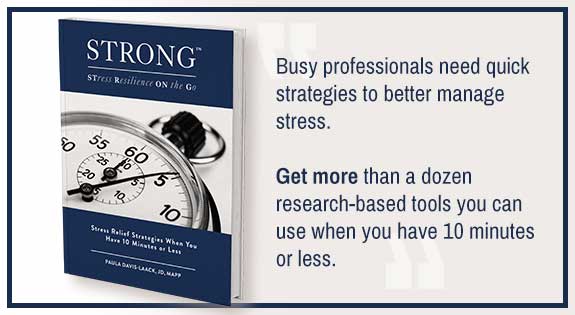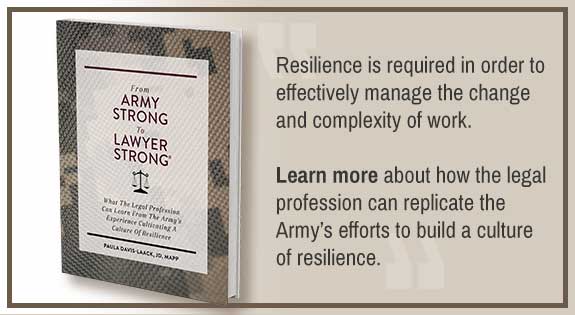Burnout
The Impact of Burnout
Burnout has been described as the biggest occupational hazard of the 21st century. Here are some statistics:
- At least 50% of physicians are experiencing burnout
- 96% of senior leaders report feeling burned out to some degree; one-third describe their burnout as extreme
- A workplace app for tech professionals includes a question about burnout by asking, “Are you currently suffering from job burnout?” More than 57% of respondents said yes, with the highest rate of 70% reported at Credit Karma
- A survey of teachers found that 87% of respondents said the demands of their job are at least sometimes interfering with their family life, more than one-half reported that they don’t have enough autonomy to do their job effectively and only 14% feel respected by their administration
- In finance, 60-65% of bankers aged 25-44 report some level of burnout
- Special Victim’s Counsel in the United States Airforce report a burnout rate of 50%*
- In one of the only empirical studies to measure burnout rates among lawyers, results showed that more than one-third of the lawyers scored above the 75th percentile on the burnout measure. The Midlevel Associates Survey conducted by law.com in 2019 showed that survey responses included 95 references to burnout, almost double the total from the 2017 survey.
Chronic stress is linked to higher rates of errors, safety issues, lack of concentration, working memory problems, inhibits effective problem solving and kills attention. For many professionals, these are critical tools to effectively do their jobs, and rates of errors and safety issues impact numerous industries where precision is critical.
Physicians with burnout are twice as likely to be involved in patient safety incidents, twice as likely to have low patient satisfaction scores (the cynicism dimension of burnout alone more than quadrupled the odds of low patient-reported satisfaction) and twice as likely to exhibit low professionalism (e.g., quality of communication, adherence to treatment guidelines and empathy). In another study, each one point increase in a surgeon’s exhaustion and cynicism scores resulted in a 5-11% higher likelihood of reporting a medical error in the past three months. This last finding is really important as it underscores that small shifts in burnout rates (even one point decreases) can dramatically impact the health and safety of others, to say nothing of reducing the potential financial impact to an organization.
One legal malpractice insurance carrier reported that the percentage of claims that had lawyer-related mistakes associated with them jumped from about 15% of their total claims in 2012 to 63% of their total claims in 2017.** As a result, claims attorneys at this insurance carrier interviewed their member general counsels to investigate the root causes of the increase. These were the most frequent responses received: the increased pace, the “always on,” 24/7 nature of the practice, increased complexity and specialization of practice areas and decrease in mentoring and personal interaction.
Burnout Defined
Burnout is a work-related process of chronic stress and disengagement.
The 3 Dimensions of Burnout
Burnout has three dimensions, which are as follows:
- Exhaustion: Feeling emotionally exhausted, depleted, and a loss of energy
- Cynicism: Having a negative attitude toward clients and those you work with, feeling irritable, and withdrawing from people and activities you once enjoyed
- Inefficacy: Experiencing diminished personal accomplishment, a perceived decline in competence or productivity, and expending energy at work without seeing any results
What Causes Burnout?
The Burnout Formula is a combination of too many job demands (aspects of your job that require sustained effort and energy), too few job resources (aspects of your job that stimulate growth and learning and help you accomplish your goals), and too little recovery (the way you re-charge at work, after work each night, on the weekends, and on vacations).
In addition to the Burnout Formula above, an imbalance or disconnect in these six areas makes a person more prone to burning out:
- Lack of autonomy
- Values conflict
- Insufficient reward
- Work overload
- Unfairness
- Lack of high-quality work relationships
To learn more about the Warning Signs of burnout, take a look at this Psychology Today article written by our founder, Paula Davis.
What Helps Prevent Burnout?
In order to prevent burnout, you must build your stress resilience and plug back into the things that engage you. There are very specific, research-based skills that we teach meant to help you do both – build your stress resilience and your engagement.
To learn more, click on our group coaching, workshops, and speaking pages. You can also get more information from our e-books and free resources.
*Personal correspondence with Maj. Lauren A. Shure, Deputy Chief, Special Victims’ Counsel Division, United States Air Force
**Firm Administrator Conference of a large legal malpractice insurance carrier. August 2017
Interested in Learning More? Sign Up for our Newsletter Today >



